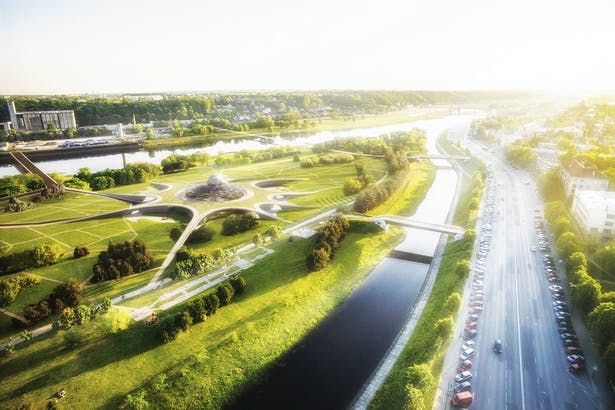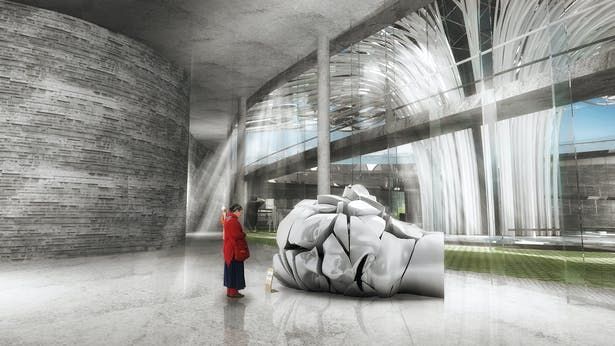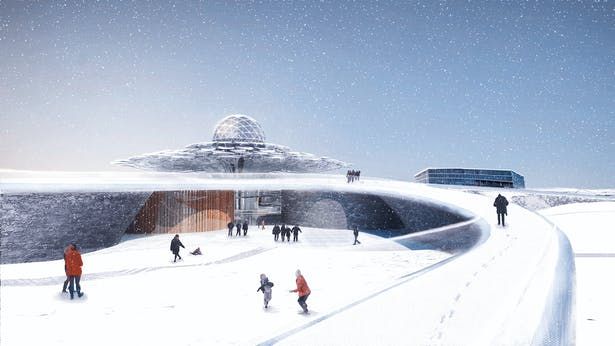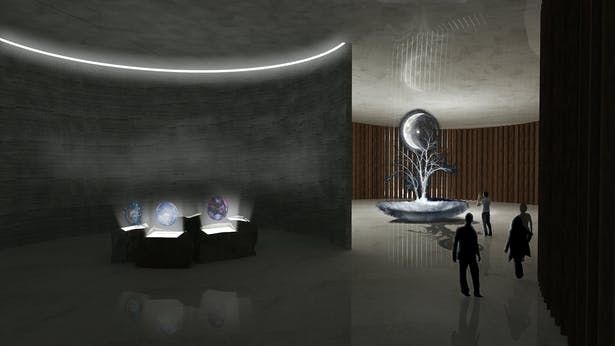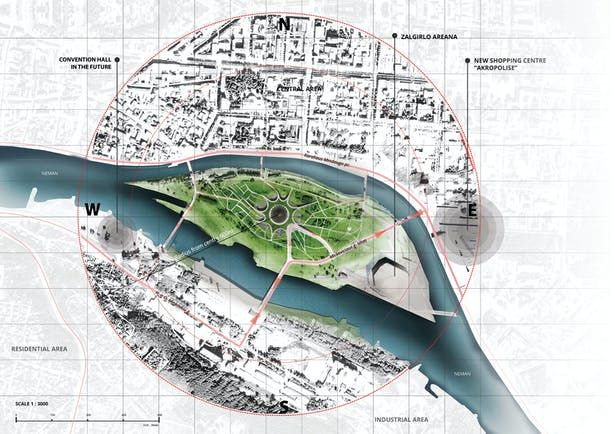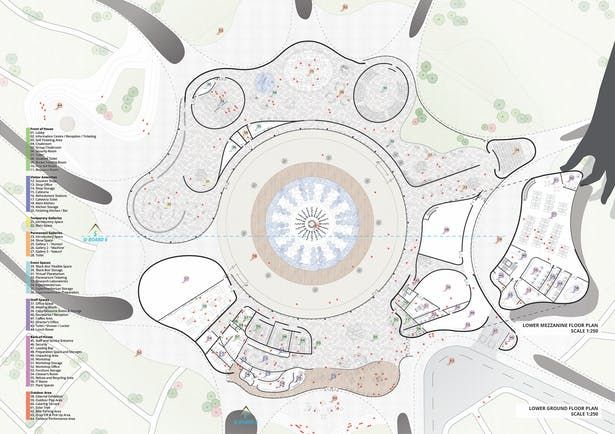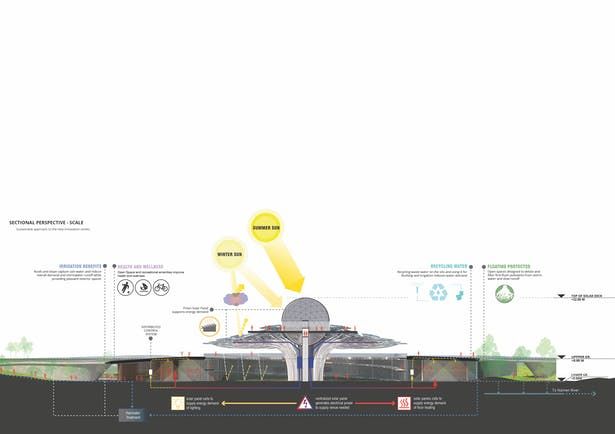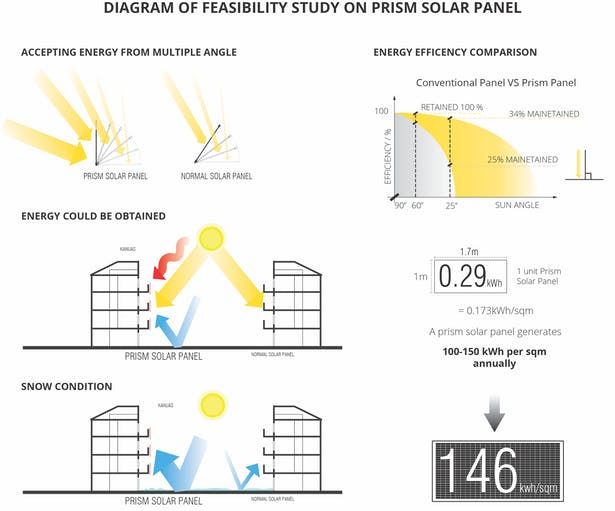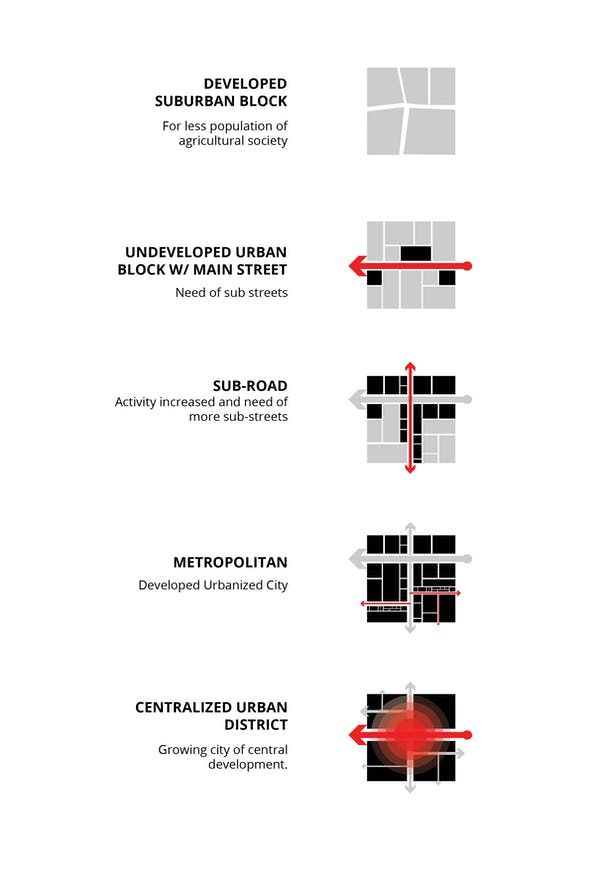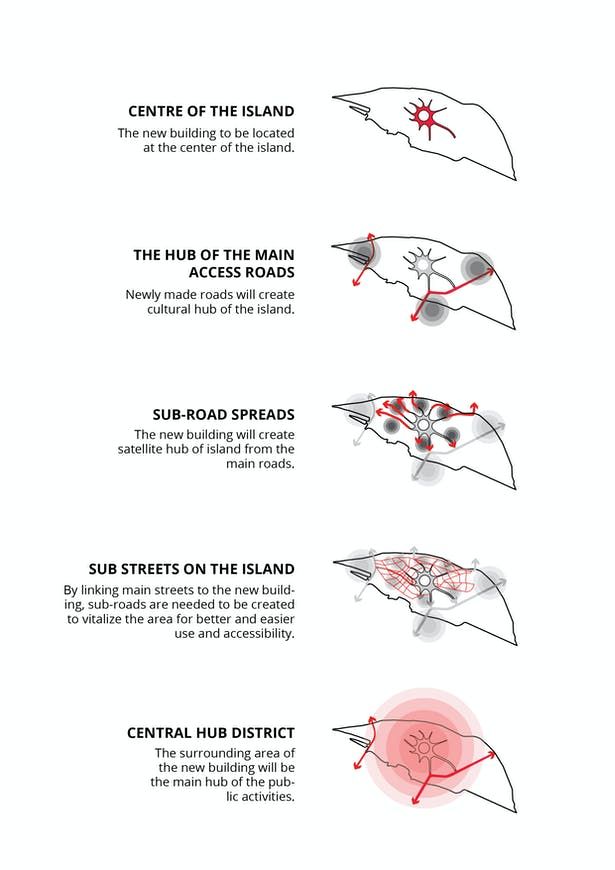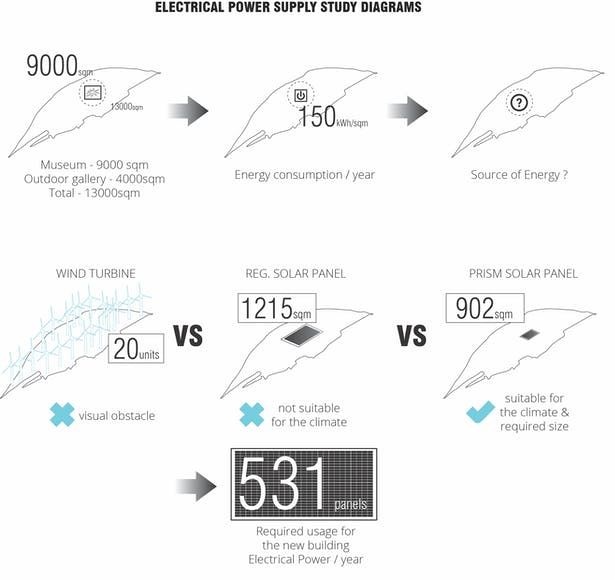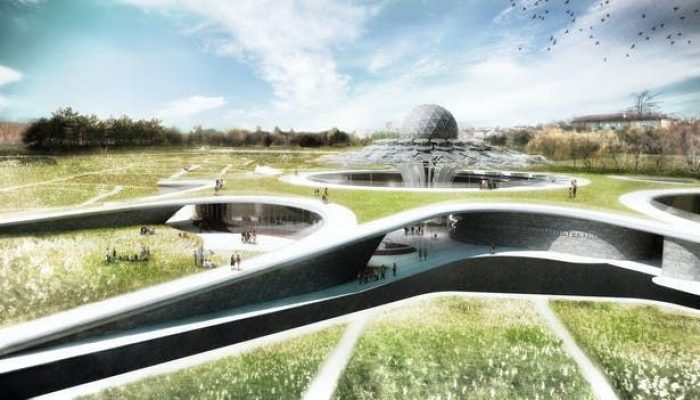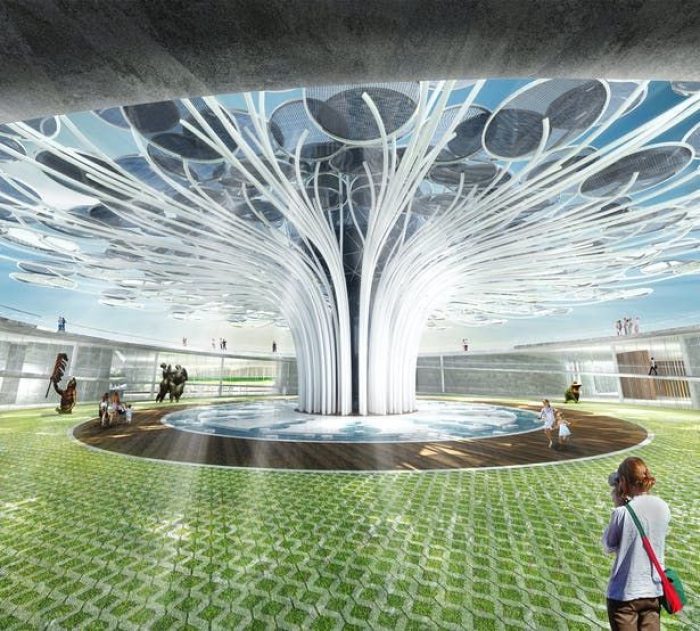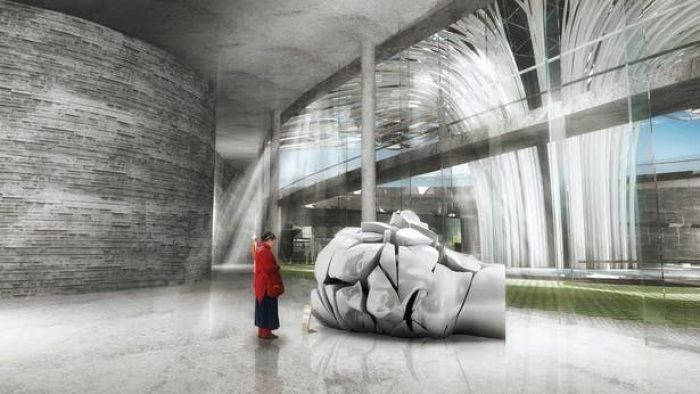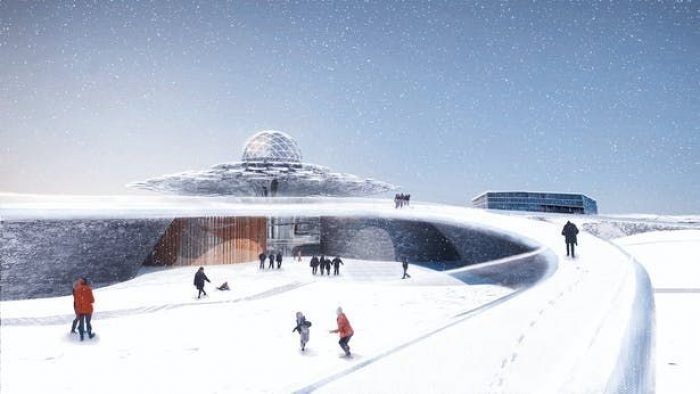Floral Solar Tree
The City of Kaunas, as the second largest city in Lithuania, is vibrant with cultural and academic life. There are eight eminent universities in Kaunas, and the city is full of curious students, educators, entrepreneurs, technologists, scientists and naturalists. With such a diverse set of young minds, thinkers and creators around, the new Cultural and Science Center Building on the Science Island will act as the catalyst for the development of new ideas, philosophies and ideologies.
Along with this notion of regional needs for the new center, the provided island for the new building has its vast open nature to embrace the new idea to be a part of its nature ground. The island is the main bridge to connect the south to the north of the Kaunas. Its function is quite cultural and fundamental to maintain its natural environment yet to provide activities for public. To foster those mentioned functions, our main concern has been decisively driven to locate the new building into the center of the island to ease the approaches for people from both the south and the north region. In addition to its location, we intend to minimize the height of architectural form by visually open up the view to both directions.
In order to enhance the idea mentioned above, the existing roads are connected each other at the central location. The created central core becomes the source of the function to begin the form of the new building and at the same time to create public space around it. In this centralized design approach, building programs are allocated accordingly by offsetting the circulation from the core. Furthermore, the core becomes a location for the renewable energy retrofit, a solar tree, which is created not only for gaining electrical power but also for public views by providing open gallery under the solar tree and a deck at the tree top area.
To further explaining of solar energy, through the use of non-conventional prism solar panel, the gaining power from the solar tree will supply sufficient electrical power enough to function for the entire building for heating, cooling, general lighting even in such a rainy and gloomy climate. Besides, the solar tree at the center of the building make the circulation to be as fluid and dynamic as possible. As one enters the building from the southwest of the island, one is greeted with a spacious well-lit lobby that magnetizes the visitor and invites him/her to begin their journey around the experiential circulation that revolves around the center, passing the cafeteria, the three major galleries (human, machine and nature) as well as the plant and preparation space, the virtual laboratory and the flexible event spaces.
The roof governs the infrastructure strategy and is the driving element of the form as it begins to act as a buffer between the interior and the exterior of the building. The roof has three functions; one, to improve the interconnectivity of the site, two, to create pockets of space in between each bridge that intercepts the interior circulation for access to the outdoor spaces like the amphitheater and the playground, and lastly, to act as a canopy for the spaces below.
Project Info
Architects: TheeAe LTD
Location: Kaunas, Lithuania
Credit: Chris WH Cho, Hackett Wong, Tony Chun, Ravin Raori, Harry To, Ben Tsang, Karen Wong
Site Area: 53,000 sqm
Total Building Area: 13,500 sqm
Floors: 2 Floor levels
Height: 24 m
Type: Museum



